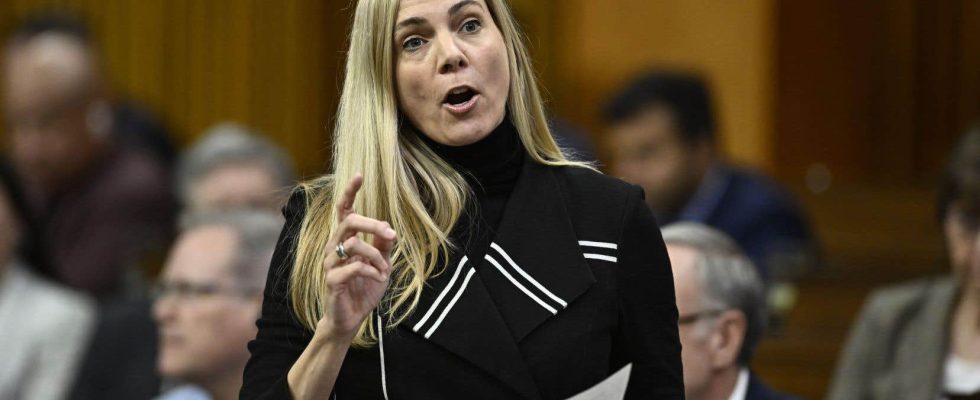Heritage Minister Pascale St-Onge was cautious on Friday about how the federal government could better support information on radio and television. Even though she says she is aware that these two sectors have suffered significant cuts in recent months, the minister expressed her discomfort at the idea that public money could serve private companies, like Bell and Quebecor, “which are still a lot of money.”
“We are certainly wondering if we should not extend the tax credit on the salaries of radio and television journalists. These are options that we are looking at. But at the same time, the other side of the coin to that would be to help companies that make choices that are not always in the public interest,” said Pascale St-Onge on Friday during a summit on the future of regional information at the Cégep de Jonquière.
Last November, Ottawa increased its tax credit offered to media companies to pay journalists in the written press. This can now reimburse up to 35% of a journalist’s salary, instead of 25%. No such program exists on TV and radio.
During her visit to Saguenay on Friday, the Minister of Heritage also announced the extension until 2027 of the Local Journalism Initiative (LJI) program for an amount of $58.8 million. IJL enables the hiring of journalists across the country to cover news in underserved areas. Community radio and television stations are entitled to this aid. But again, these are essentially written press companies, of which The dutywho benefit from it.
“We are well aware that the crisis which has been affecting the written press for a long time is now also affecting TV and radio, even if it is not necessarily for the same reasons. This is why we are looking at what we can do to help radio and television more. But I think that if we were to help companies that are still making money, we would also be criticized for it,” illustrated the Liberal minister, while answering questions from people in the industry.
Serious concerns
Several local media players met on Friday in Saguenay as part of a summit on the future of regional information organized by the École supérieure en Art et Technologie des Médias (ATM). On site, concern was evident, as job cuts followed one another in recent months.
The TVA network, owned by Quebecor, will officially make significant cuts to its regional television stations in a few weeks. The production of regional news bulletins will even be repatriated to Quebec. Among the 547 positions that will be eliminated within the company, several are located outside of Montreal.
The other major player in the media industry, Bell, plans to sell 45 of its radio stations across the country, including 7 in Quebec. In the TV and radio stations that remain within its fold, the company has eliminated several journalist positions. At the time this decision was announced, a month ago, Minister St-Onge had very harsh words about Bell, criticizing the company for favoring its shareholders rather than honoring its commitments to local media.
On Friday, she recalled that large media companies already benefited from considerable tax breaks. “These reliefs gave them savings in regulatory costs. For the entire industry, we’re talking about $120 million. We would have expected this money to be used to maintain the news broadcasts, but that is not the case,” thundered the Minister of Heritage.
